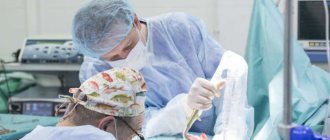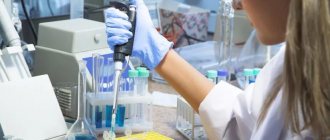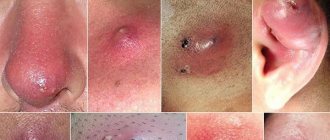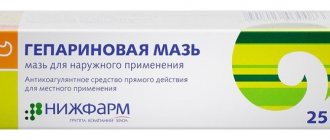Typically, yeast fungi indicate that there is a severe malfunction in the functioning of the gastrointestinal tract. The doctor may indicate the need for tests, based on the results of which he will make the appropriate diagnosis - intestinal candidiasis.
Intestinal candidiasis refers to a common deviation of the digestive system, which is expressed in the presence of a yeast fungus that has settled on the intestinal mucosa. It is present in every person in the mucous membranes (in the mouth, in the large intestine and even in the vagina) and is intended to maintain homeostasis.
However, under certain conditions, it can cause serious harm to the body, since the process of rapid reproduction of the fungus is activated, that is, the development of the disease starts. Candidiasis acts as a complication of dysbiosis. Anyone can get this disease.
Symptoms of yeast in children's stool
Yeast as a cause of problems with bowel movements.
Even before receiving the results of the tests, it is possible to find out that yeast fungus has begun to actively develop in the body, which will indicate improper functioning of the intestines.
In order to contact the laboratory for testing, the reasons will be:
- Pain in the abdominal area;
- Reluctance to eat;
- Problem with bowel movements, presence of discharge;
- Pain when going to the toilet;
- Flatulence;
- Constant regurgitation in babies.
However, there is no need to panic right away, because if the test results do not reveal any abnormalities, and the child’s appetite is normal, then there is no need to use various treatment options. When the test results indicate that the norm for this type of fungus in the body is exceeded, you should urgently consult a doctor and begin appropriate treatment.
Adults should remember that taking an antibiotic provokes the proliferation of these microorganisms. However, this nuance cannot be considered the exclusive reason for the activation of the process of bacterial reproduction.
Treatment
Therapy for this pathological process is carried out on an outpatient basis, but if this does not bring the required results or the course of the disease is complicated, the patient is admitted to a specialized hospital.
The affected areas of the outer skin are treated daily with medication, serous crusts are removed at the source of infection and the hair is shaved off.
The use of antifungal ointments, antifungal pastes, creams and emulsions is also indicated. If complications occur, laser therapy of damaged areas or surgical removal of the nail plate is possible.
To achieve a greater effect, decimeter (UHF) therapy, darsonvalization and medicinal electrophoresis are used.
Yeast in baby's stool
Yeast in a baby's stool negatively affects the digestive system.
The organs that are involved in the digestion of food in a child are most vulnerable to various bacteria. Such bacteria pose the greatest danger to infants.
Yeast fungus of the Candida species negatively affects the formation of their digestive system and affects the mucous membrane of internal organs.
As a result, the child does not want to eat, refuses milk, and sleeps poorly. Yeast-like fungus can disrupt the growth process in children, slow down their physical development, and also affect mental development.
In young children, intestinal candidiasis occurs against the background of dysbacteriosis, while they are constantly tormented by pain, and thickening of the walls in the anal area is observed. Often this disease leads to the development of candidiasis on the arms, legs and other surfaces of the body.
If parents have the first suspicions about the presence of a disease, it is necessary to immediately begin an examination, since timely detection of the disease will help to quickly cure it.
Bacterial dermatitis: causes and symptoms
02.08.2021
Bacterial dermatitis is one of the most commonly diagnosed dermatological diseases. It most often occurs as a result of a streptococcal or staph infection, but this is not the only cause. The disease is treated pharmacologically, depending on the pathogen that has a harmful effect on the skin.
Bacterial infections can affect deeper areas of the epidermis, not just its superficial layer, so correct diagnosis is important. Now its production has become possible thanks to microbiological tests. Sometimes the symptoms of infection are so characteristic that additional examination is not required. The patient is prescribed medications for bacterial dermatitis and recommended daily care with properly selected cosmetics.
Why does bacterial dermatitis occur?
Bacterial dermatitis is nothing more than infection of the surface of the skin or its deeper layers by pathogenic pathogens. To recognize their type, you need to visit a dermatologist and undergo several important tests . Bacterial dermatitis is most often caused by streptococci and staphylococci, as well as other pathogens that cause diseases that often threaten human life and health. These include, but are not limited to, sexually transmitted diseases, skin tuberculosis or Lyme disease. People with weakened immune systems also struggle with bacterial dermatitis . If left untreated , dermatitis can progress to a systemic infection with the risk of death.
What diseases are caused by bacterial dermatitis?
Bacterial dermatitis is not a separate disease. This term covers a wide range of conditions resulting from microbial infection. These include:
- contagious impetigo is a disease that mainly affects children. A characteristic symptom is yellow scabs that look like erosion. Contagious impetigo requires drug treatment;
- contact eczema is a disease of allergic origin or resulting from contact with an irritating factor. Its symptoms are papules and exudative pustules covering large parts of the body;
- nematode eczema - has symptoms similar to contact eczema , but with the difference that skin changes on the patient’s body resemble coins;
- allergic reaction - usually caused by an insect bite that transfers pathogenic microorganisms to the skin. Skin rashes resemble urticaria or erythematous papules.
Bacterial skin infections also include atopic dermatitis . The patient's skin becomes irritated, red and at times itchy. The disease may also be accompanied by swelling . Infection by pathogens is also associated with the presence of boils, which, if located close to the brain , can pose a significant threat to life and health.
Drug treatment of bacterial dermatitis
Pharmacological treatment of bacterial dermatitis depends on the type of pathogenic microorganism. In many cases, antibiotic therapy or treatment with prescription steroids is necessary. The patient also receives topical products such as ointments, creams and lotions for the skin. Some diseases tend to recur, so daily skin care is an important element of therapy . Cosmetics purchased at a pharmacy often do not cope with such ailments, so it is worth turning to pharmaceutical drugs.
Dermocosmetics and bacterial dermatitis
Bacterial dermatitis cannot be treated with dermocosmetics, but they are necessary during the treatment process. The patient's skin requires care and should not be treated with drugs that may worsen its condition. Pharmaceutical cosmetics minimize this risk because their formula was developed by dermatologists. They, in turn, made sure that creams and ointments had a healing effect on the skin and did not damage it. Most cosmetic products are based on ingredients that have soothing and healing properties. Such substances are, for example, panthenol and allantoin.
Dermocosmetics also contain unique moisturizing complexes and restore the damaged lipid barrier of the epidermis. Such as ERC or PCA complex, as well as natural moisturizing factor. They not only prevent the skin from losing water, but also ensure constant hydration.
Manufacturers of pharmaceutical dermocosmetics care about their consumers, so they have created entire lines of products to care for various skin types, including problem skin. The offer includes wash lotions, body lotions and intensive moisturizing creams.
Published in Dermatology Premium Clinic
How to get rid of candidiasis in a child
To get rid of candidiasis, you need to strengthen your immune system.
Based on the results of the analysis, if the specified bacteria exceed the norm, the doctor will prescribe the necessary medications.
The very first and most important task is to bring the intestinal microflora to a normal state and normalize the functioning of the digestive system. It is also necessary to strengthen the immune system.
In addition, it is necessary to conduct additional research for the presence of various abnormalities that may cause the appearance of this disease. The form of treatment will directly depend on the results identified. Typically, treatment of this disease has the following goals:
- Correct treatment of the disease. Based on the results of the study, medications will be prescribed.
- General strengthening therapy. This type of infection begins to manifest itself when immunity is low and there is an insufficient amount of nutrients in the body.
- Based on this, taking various vitamins is also necessary.
Thematic video will tell you about candidiasis:
https://www.youtube.com/watch?v=2M7sely6ph8
Diagnostics
To make an accurate diagnosis, a consultation with a mycologist is necessary.
After clarifying the patient’s complaints and reviewing the provided medical documentation, the specialist prescribes a list of laboratory tests, which include:
- visual examination of the patient under a Wood's lamp, revealing uncharacteristic glow of the scales;
- collection of clinical material to determine the type and tissue form of mycoses;
- Sowing the scrapings separated for microflora helps to determine the susceptibility of a particular fungal disease to chemotherapy drugs.










